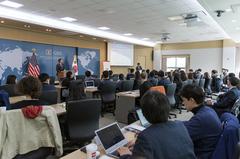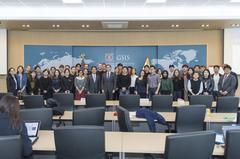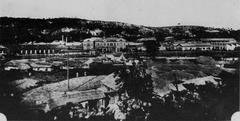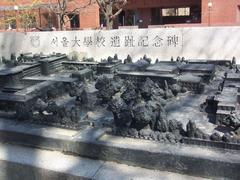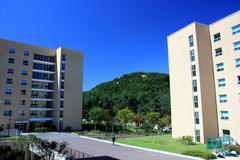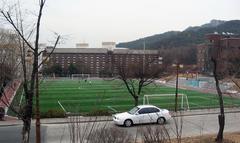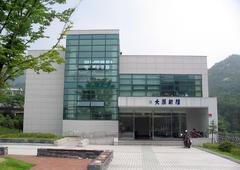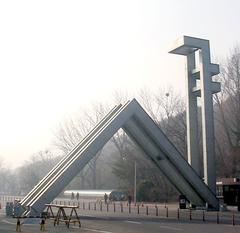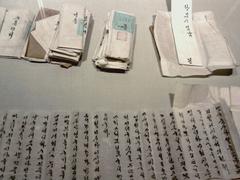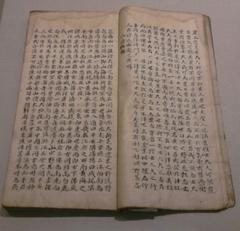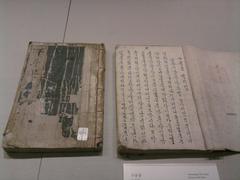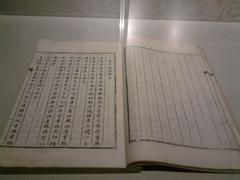
Seoul National University Visiting Guide: Hours, Tickets, and Insider Tips
Date: 14/06/2025
Introduction
Seoul National University (SNU), set at the base of Gwanak Mountain in southern Seoul, is South Korea’s most prestigious institution of higher learning and a landmark of academic, historical, and cultural importance. Founded in 1946 following Korea’s liberation, SNU has grown into a globally recognized university, currently ranked 31st in the QS World University Rankings for 2025. The expansive campus, spanning over 4 square kilometers, is open to visitors and offers a dynamic blend of modern architecture, historical landmarks, and tranquil natural settings.
SNU welcomes travelers, prospective students, and culture enthusiasts to explore its campus, museums, and institutes. From the iconic Sha Gate and Rem Koolhaas-designed Museum of Art to the Kyujanggak Institute housing rare Joseon Dynasty archives, there is much to discover. The university also hosts events, exhibitions, and festivals that provide a deeper experience of Korean academic and cultural life.
Getting to SNU is convenient via public transit, particularly Seoul Subway Line 2 and connecting shuttle buses. The campus is designed to be accessible, with ramps, elevators, and shuttle services for visitors with mobility needs. Whether you prefer a self-guided exploration with digital maps or an organized campus tour, this guide provides everything you need to plan a memorable visit—including hours, ticket details, transportation advice, and nearby attractions.
For the latest visitor information and to book guided tours, consult the SNU Official Website and the Campus Tour Booking page.
Contents
- Overview & Significance
- Visiting Hours & Ticket Information
- Directions & Accessibility
- Campus Highlights
- History of SNU
- Visitor Tips & Experiences
- Nearby Attractions
- Frequently Asked Questions (FAQ)
- Visuals & Media
- Summary & Final Recommendations
- Official Sources
Overview & Significance
Seoul National University stands as South Korea’s academic leader and a vibrant cultural site. Visitors can expect a blend of educational heritage, innovative architecture, and breathtaking landscapes. Key sites include the Sha Gate, SNU Museum of Art, Kyujanggak Institute for Korean Studies, and the serene Jaha Pond. The campus is also a hub for cultural events and exhibitions open to the public.
Visiting Hours & Ticket Information
- Campus Grounds: Open daily, 9:00 AM–6:00 PM. General admission is free.
- SNU Museum: Monday–Saturday, 10:00 AM–5:00 PM; closed Sundays and national holidays. Some exhibitions may require tickets.
- Museum of Art (MoA): Monday–Saturday, 10:00 AM–6:00 PM; closed Sundays and national holidays. Special exhibitions may have an admission fee—see the official MoA website for details.
- Kyujanggak Institute: Open weekdays. Check the latest exhibition hours on the official website.
Campus Tours:
- Offered Monday–Friday, 11:00 AM–4:00 PM. Advance reservation required via the booking portal.
- Tours are available in multiple formats (walking, indoor, bus) and often in English and other languages upon request.
Directions & Accessibility
Getting There
- Subway: Take Seoul Subway Line 2 to Seoul National University Station (Exit 3). From there, transfer to local buses (5511, 5513, 5516) or take a short taxi ride to the main gate.
- Shuttle Buses: Operate during academic hours, connecting key campus locations.
- Parking: Limited and paid (1,500 KRW per 30 minutes; additional 300 KRW for each subsequent 30 minutes). Public transportation is recommended.
Accessibility
- Major buildings are wheelchair accessible, and ramps and elevators are available.
- Advance notice is recommended for visitors with mobility needs to arrange assistance or shuttle services.
Campus Highlights
- Sha Gate: A symbol of SNU, designed in 1978 using stylized Korean characters. A must-see and popular photo spot.
- Jaha Pond: A peaceful retreat ideal for reflection and scenic photography, especially during cherry blossom and autumn foliage seasons.
- SNU Library: One of Korea’s largest academic libraries, offering a tranquil study environment.
- SNU Museum: Exhibits Korean art and university history; admission is usually free.
- Museum of Art (MoA): Designed by Rem Koolhaas, known for contemporary art exhibitions.
- Kyujanggak Institute: Houses invaluable Joseon Dynasty archives and is a resource for Korean history enthusiasts.
- Student Center & Cafeterias: Experience campus life, enjoy affordable Korean meals, and shop for SNU souvenirs.
History of SNU
Established on October 15, 1946, SNU emerged from the merger of ten academic institutions in Seoul, marking Korea’s transition into modern education post-liberation. The campus endured wartime destruction but was rapidly rebuilt, symbolizing national resilience. The relocation to Gwanak Campus in 1975 fueled further growth. Today, SNU is internationally recognized and hosts a diverse community of students and scholars.
Visitor Tips & Experiences
- Plan Ahead: Reserve tours in advance, especially during peak seasons.
- Events: Check the SNU calendar for lectures, exhibitions, and festivals.
- Photography: Permitted in most outdoor spaces; confirm policies for indoor areas.
- Dining: Cafeterias and cafes serve a variety of cuisines at student-friendly prices.
- Dress: Casual, comfortable attire is suitable; respectful clothing is appreciated in museums.
Nearby Attractions
- Nakseongdae Park: Historical park near SNU.
- Seoul National Cemetery: A significant site for Korean modern history.
- Gwanak-gu Neighborhoods: Explore local markets, cultural centers, and vibrant city life.
- Seoul Arts Center: Accessible via public transportation for arts and performances.
Frequently Asked Questions (FAQ)
Q: Is there an admission fee to visit SNU?
A: No, general entry is free; some exhibitions or events may require tickets.
Q: Are guided tours available in English?
A: Yes, tours in English and other languages are available with advance booking.
Q: Can I visit the campus on weekends?
A: The campus is open daily, but guided tours operate only on weekdays.
Q: Is the campus accessible for people with disabilities?
A: Yes, most major facilities are accessible, and assistance is available upon request.
Q: How do I get to SNU by public transport?
A: Use Line 2 to Seoul National University Station, then a local bus or taxi to the main gate.
Visuals & Media
Take a virtual tour of SNU for immersive images and videos of campus landmarks, including the Sha Gate, Museum of Art, Jaha Pond, and Kyujanggak Institute. Use alt text such as “Seoul National University Main Gate – iconic university entrance” for accessibility and SEO.
Summary & Final Recommendations
Seoul National University offers a unique blend of academic excellence, historical significance, and natural beauty. With free campus access, rich cultural sites, and well-organized visitor services—including multilingual tours and digital guides—SNU is an inviting destination for international travelers, students, and scholars. Enhance your visit by exploring the Museum of Art, Kyujanggak Institute, and nearby Seoul attractions. Plan ahead, utilize official resources, and immerse yourself in the vibrant campus culture.
For up-to-date information, event calendars, and tour bookings, visit the SNU Visit Information page and follow SNU’s official social media channels.
Official Sources
- Seoul National University Office of International Affairs: Campus Tour Booking
- 10mag Seoul Universities Guide: Eight Universities Tour Seoul
- SNU Official Website: SNU Visit Information
- SNU Museum of Art: MoA Website
- SNU Virtual Tour: Virtual Tour
- SNU Transportation Details: Visit SNU Press
